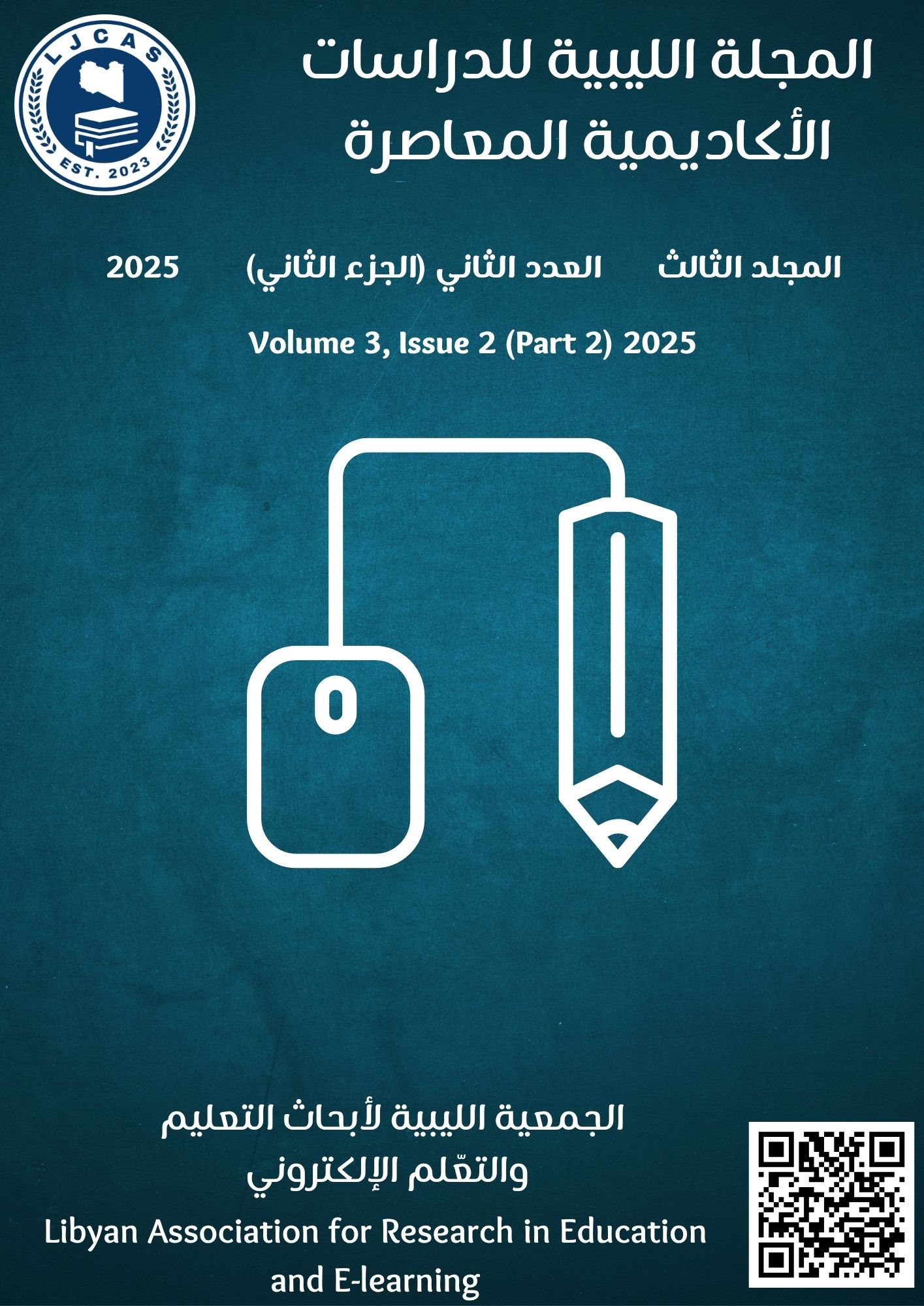Floristic Diversity and Anthropogenic Impacts in the Sqeifat Bab Al-Zaytun Area, Tobruk: An Integrated Ecological Assessment for Conservation Planning
Keywords:
Plant diversity, Plant families, Semi-arid regions, Plant density, Overgrazing, TobrukAbstract
This study was conducted in 2018 in the Sqeifat Bab Al-Zaytun area of Tobruk city to document and analyze the vegetation cover and its diversity. A total of 97 plant species belonging to 81 genera and 30 families were identified and classified. The results revealed the dominance of the Asteraceae family, accounting for 19.59% of the total species, followed by the Fabaceae family (13.40%), and then the Poaceae and Brassicaceae families. The study found that 50% of the plant families were represented by only one species, indicating the presence of rare or limited-distribution species in the region. Quadrat analysis showed the dominance of certain species such as Malva parviflora, which recorded the highest values of density and frequency, along with common species like Cynodon dactylon and Chrysanthemum coronarium. In contrast, rare species with low density and frequency values, such as Adonis dentata and Echium angustifolium, were recorded.These results confirm that the Sqeifat Bab Al-Zaytun area possesses notable plant diversity, reflecting the adaptability of species to semi-arid climatic conditions. However, human practices such as overgrazing and unregulated agricultural activities pose a significant threat to the sustainability of this plant diversity.






